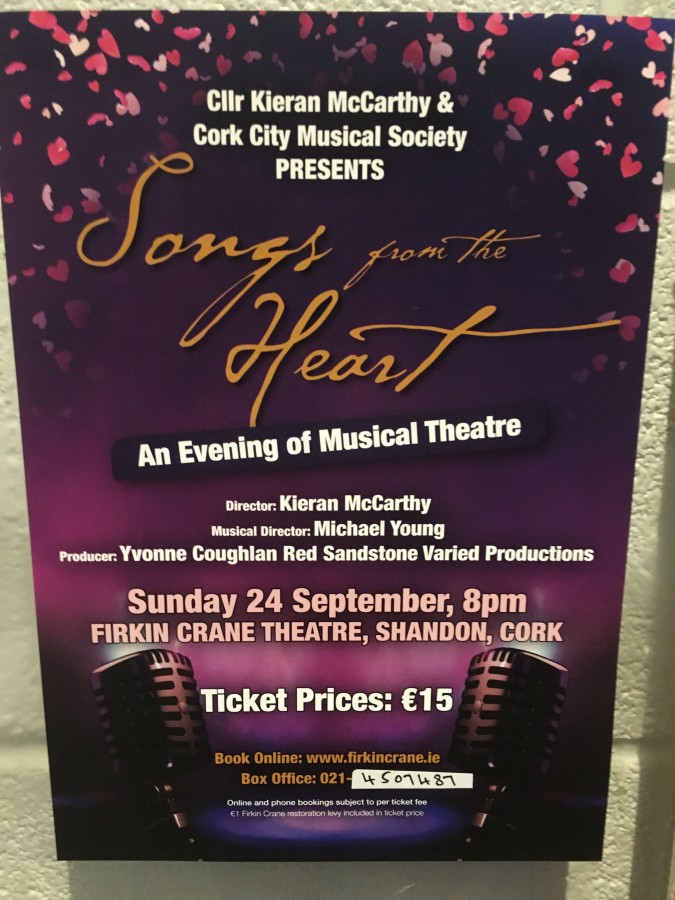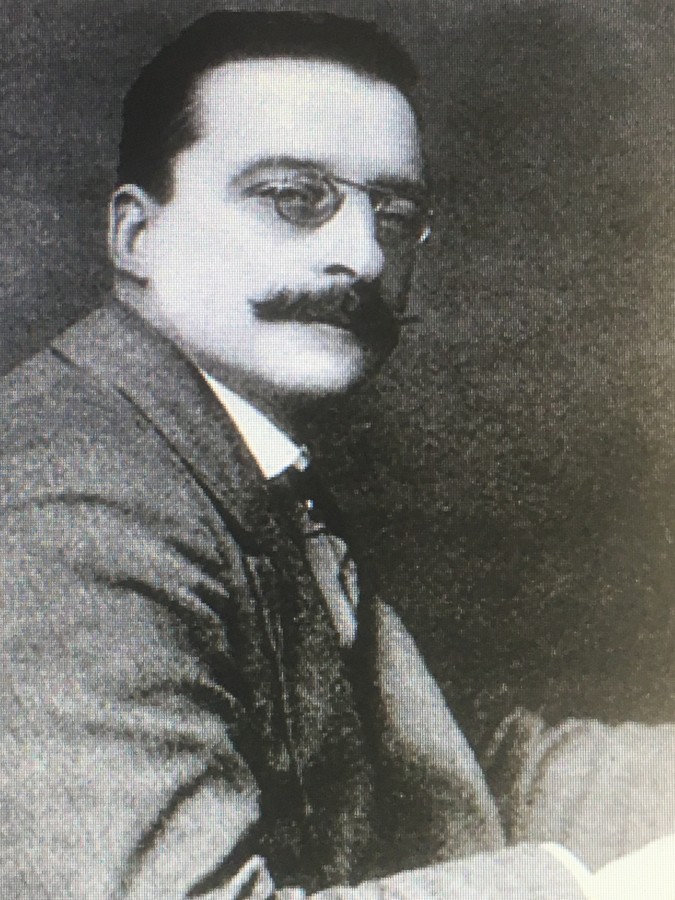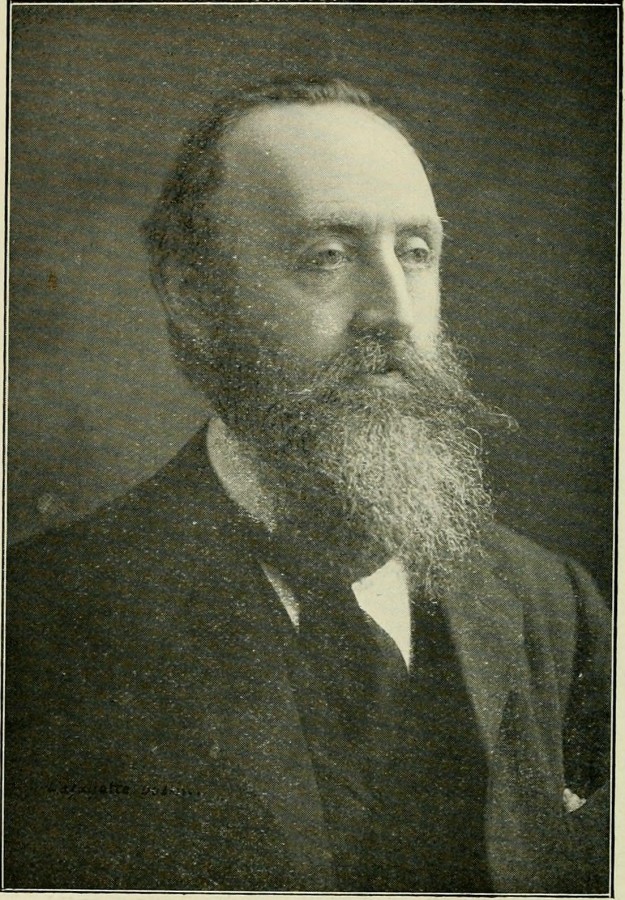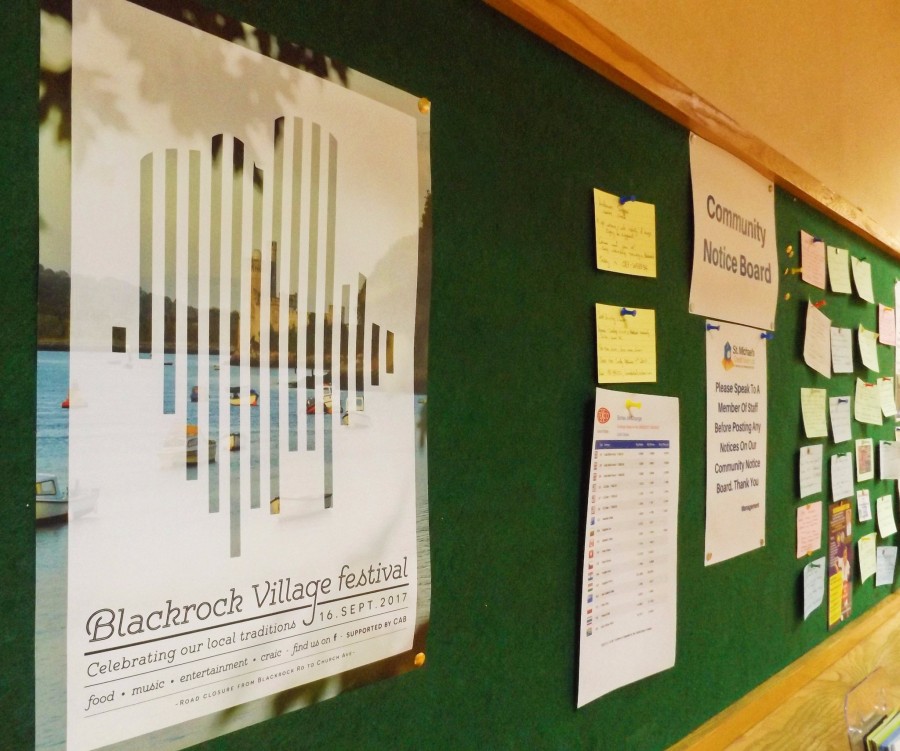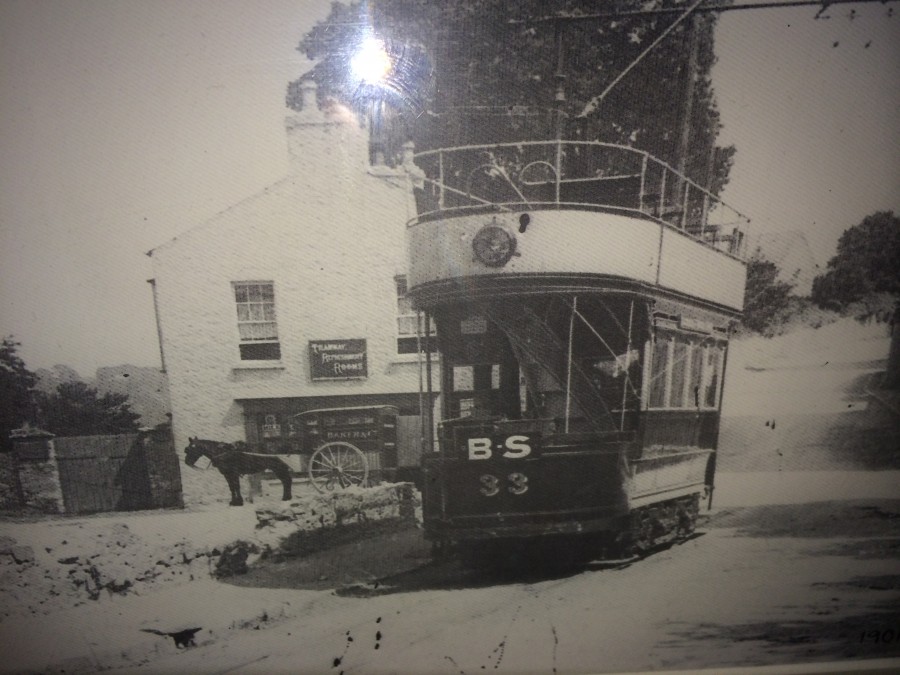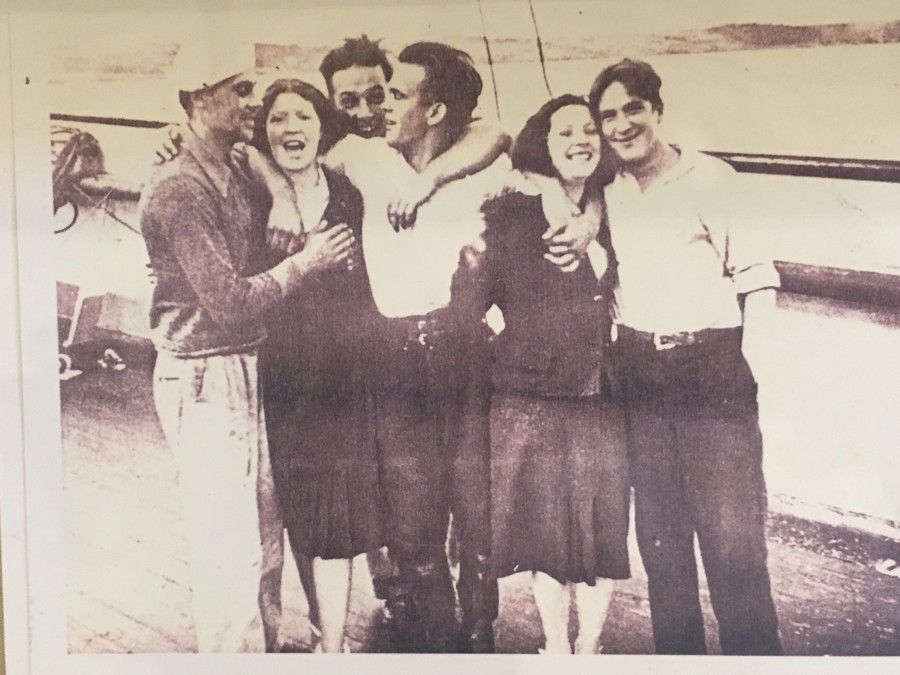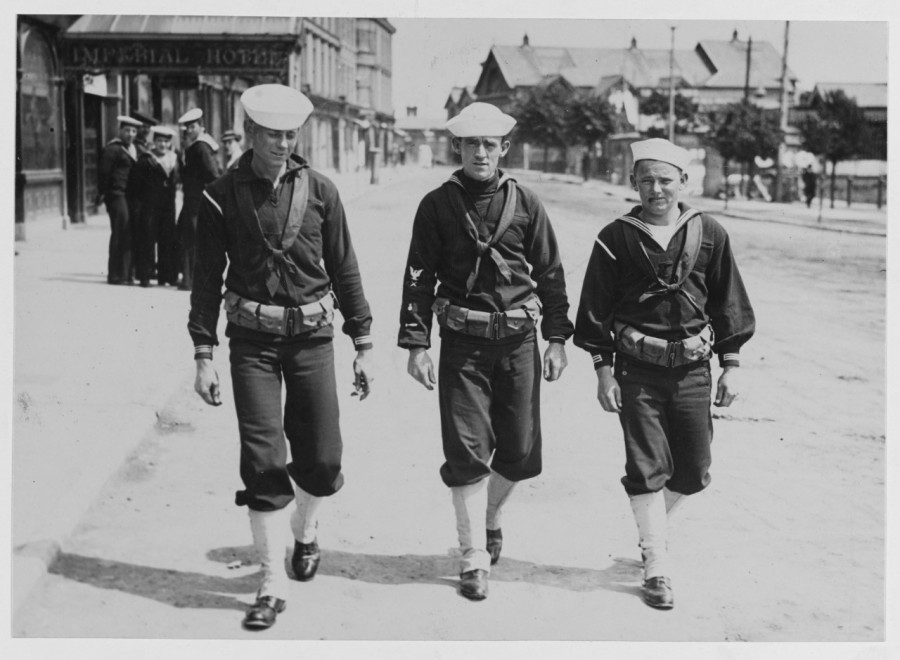Songs from the Heart, An Evening of Musical Theatre, Sunday 24 September 2017
Kieran’s Our City, Our Town, 21 September 2017
Kieran’s Our City, Our Town Article,
Cork Independent, 21 September 2017
The Wheels of 1917: Arthur Griffith in Cork
One hundred ago this week the leaders of the National Sinn Fein movement, Count George Noble Plunkett (father of Joseph Plunkett), Eoin McNeil and Arthur Griffith came to Cork as part of a series of Sinn Fein re-organisation rallies in the country’s principal towns and cities. On Sunday 24 September 1917, on the Grand Parade, three meetings were addressed by them and proceedings were described in the Cork Examiner. Countess Markievicz had spoken in Cork some weeks previously on 11 August 1917 (see previous articles).
The principal platform was erected opposite the offices of the Cork Sinn Fein Executive (56, Grand Parade); there were two other platforms on waggonettes to the right of the National Monument and to the left of the Berwick Fountain respectively. The crowd present numbered several thousand. During the morning contingents arrived by cycle and car from distant parts. The Sinn Fein colours were very present and on the banners there were expressions in Irish of welcome and support.
Contingents representing Cork City Volunteers, City Wards, Sinn Fein Clubs, Girls’ Volunteer Clubs, together with the following bands; Butter Exchange, Blackrock, and Cork Volunteers were present. Contingents of Volunteers also attended from Whitechurch, Mourneabbey, Ballingeary, Dooniskey, Carriganimma, Kilnamartyra, Mallow, Kanturk, Dungourney, Watergrasshill, Castletownroche, Millstreet, Clogheen, Aghadilane, Douglas, Blackrock, Ballinhassig, Ballinadee, Dunmanway, Skibbereen, Bantry, Ballinagree, Ballyvourney and Clondrohid.
On the principal platform Liam de Roiste, vice-chairman of Sinn Fein in Cork, presided, and having addressed the meeting in Irish, introduced Arthur Griffith. Arthur was moved by the valour of the Rising participants and wanted to join them but was asked by the leaders not to as it was felt his propaganda skills in the future would be of greater value. After the 1916 Rising he was arrested and imprisoned but he was released at the end of the year.
Arthur Griffith recalled that his first address to the people of Cork was seventeen or eighteen years previously. He had come with others to organise public rallies to oppose the Westminster Government in seeking recruits for the army, then engaged in fighting the Boer War. He resented the ongoing suggestion made in a variety of press statements that the only safeguard between Ireland and conscription was the presence of an Irish Party in Parliament. He claimed that John Redmond MP, representing Ireland’s interest in Westminster had argued that if Parliament showed him there was any necessity in this country for imposing conscription he would support it. Countering John Redmond, Arthur Griffith argued that Sinn Fein wished for the people to organise and back up the claim of an Independent Ireland to be put before the World War Peace Conference.
Arthur Griffith refused to join the ongoing Irish Convention, which was meeting to debate Irish self-government. He deemed that three of its conditions it set out should not be conceded. He called firstly that delegates should be elected by the vote of the people of Ireland; secondly that whatever decision that the majority came to, even the establishment, of an Irish Republic, that that decision should be accepted by Westminster; and thirdly that England would pledge herself to the United States and her Allies in Europe to carry out whatever decision was arrived at. He strongly held that the Convention was not a Convention of the Irish people, but of the Westminster Government’s nominees. The Sinn Fein policy is to make Ireland completely independent. They deny all authority or right of England to legislate for Ireland. They were going to the Peace Conference to enforce that demand did not recognise English authority by sending representatives to the Westminister Parliament.
Arthur Griffith outlined that Sinn Fein proposed to set up a Constituent Assembly representative of the Irish people who were prepared to assemble in the capital of Ireland. He compared Ireland’s case to Hungarian Deputies refusing to recognise the authority of Austria 60 years previously. In the proposed Irish Assembly they would formulate measures for the nation, “to guide and lead the nation in the struggle for their independence, and to set before the Peace Conference their claim for the restoration of Ireland’s national independence”. Arthur outlined; “Ireland should come before the Peace Conference because America was primarily in the war to establish the freedom of the seas. That question would never be solved until the situation of Ireland in Europe is settled. Ireland was the key to the freedom of the seas, became it controlled the Atlantic”.
Concluding at his platform, Arthur Griffith referred to the upcoming visit of the Irish Convention to Cork (see next week’s column) in the days following his speech, and asked that the Cork people not support it or protest against it. He noted: “Simply let it go by. It may come to a conclusion, or it may not; but with anything that did not give back Ireland its complete independence Sinn Fein would have nothing to do with it; the Convention suggests some form of Government inside the British Empire”. Arthur envisaged that there would be peace in the ensuing months, and predicted that before the summer of 1918 the World War Peace Conference should have met and the future of Ireland will then have been decided.
Looking to read more Our City, Our Town articles from over the years, log onto the index at my website www.corkheritage.ie
Secret Cork (2017) by Kieran McCarthy is now available in Cork bookshops or online at Amberley-books.com
Captions:
913a. Arthur Griffith (source: Cork City Library)
913b. Eoin McNeil (source: Cork City Library)
913c. Count Noble George Plunkett (source: Cork City Library)
McCarthy: New Access Ramps to Railway Line a Positive Step, September 2017
Cllr Kieran McCarthy has expressed his concerns that a happier balance needs to be maintained between cyclists and pedestrians on the Old Railway Line. To facilitate improved access, new access ramps between Mahon & the Passage to Docklands Greenway will be complete and ready for use very shortly. The ramps are designed at a shallow gradient to facilitate ease of access for pedestrians & cyclists. The work was funded by the National Transport Authority, designed by Cork City Council Roads Design Office and constructed by McGinty & O’Shea Ltd. A follow-on landscaping contract (sponsored by a local developer) will be undertaken in the coming weeks. This larger project is currently under development with Part 8 Planning, detailed design and construction tendering scheduled for 2018.The overall objective of the package of work is to enhance the attractiveness of the greenway and optimise the number of pedestrians & cyclists using it.
Cllr McCarthy noted: “The project is phase one of a larger plan to enhance and improve the full length of the Greenway including additional access ramps, widened and improved pavements, public lighting, cctv, landscaping etc. When complete, the greenway will serve as both a recreational and commuter route for cyclists & pedestrians only living in the city centre (or along the route) and working in Mahon”.
In addition, the Mahon Bus Gate, situated at the eastern end of St Michael’s Drive, is now complete and operational. Mahon Point Shopping Centre now serves as the terminus point for the very popular 202 Route. The terminus is situated in close proximity to the Mahon Point Shopping Centre entrance thereby facilitating passengers comfort and convenience as they can wait within the Centre until their bus arrives.
Cllr McCarthy notes; “I welcome the erection of a real time passenger display panel to inform passengers of the expected arrival time for the next bus. It is great to see national funding being invested into the south-east ward. The Bus Gate was funded by the National Transport Authority, designed by Cork City Council Roads Design Office and constructed by McGinty & O’Shea Ltd.
Songs from the Heart, An Evening of Musical Theatre, Sunday 24 September 2017
San Francisco Delegation to Cork, September 2017
UNESCO Conference – Cork Learning City 2017
Cork has been successful in its bid to host the third UNESCO Global Network of Learning Cities Conference in Sept. 2017. The two previous conferences were held in Beijing 2013 and Mexico 2015, each involved over 600 delegates from countries worldwide. The conference will be presented by UNESCO Institute of Lifelong Learning, held in Cork City Hall, from Sept 18th -20th 2017, supported by Cork City Council and Cork ETB hosted with its Learning City Project partners, UCC, CIT, and other agencies in the city.
Sept 20th Learning Festival Showcase Programme
This is a first for Ireland and for Europe:
Cork is the only Irish city currently recognized by UNESCO for its excellence in the field of Learning, and was one of just 12 cities globally, and 3 in Europe, presented with inaugural UNESCO Learning City Awards in 2015. A case study of the city was published by UNESCO Institute of Lifelong Learning (UIL) in Unlocking the Potential of Urban Communities, Case Studies of Twelve Learning Cities also in 2015. The other two European cities are Espoo (Finland) and Swansea.
Cork successfully bid against 3 other European cities to host the conference because of its track record. The international conference presents Ireland with a unique opportunity to further cement the reputation of the country and the city as a centre of excellence in education and learning. The UIL Directorate team visited Cork during the Lifelong Learning Festivals of 2015 and 2016 and selected the city following a strong bid prepared with the assistance of the Cork Convention Bureau who have recognised experience of hosting international conferences of this scale in the city previously.
Myth Busting, Cork City Council & Cork City Expansion
Advertisement in Irish Examiner, taken out by Cork City Council, 16 September 2017
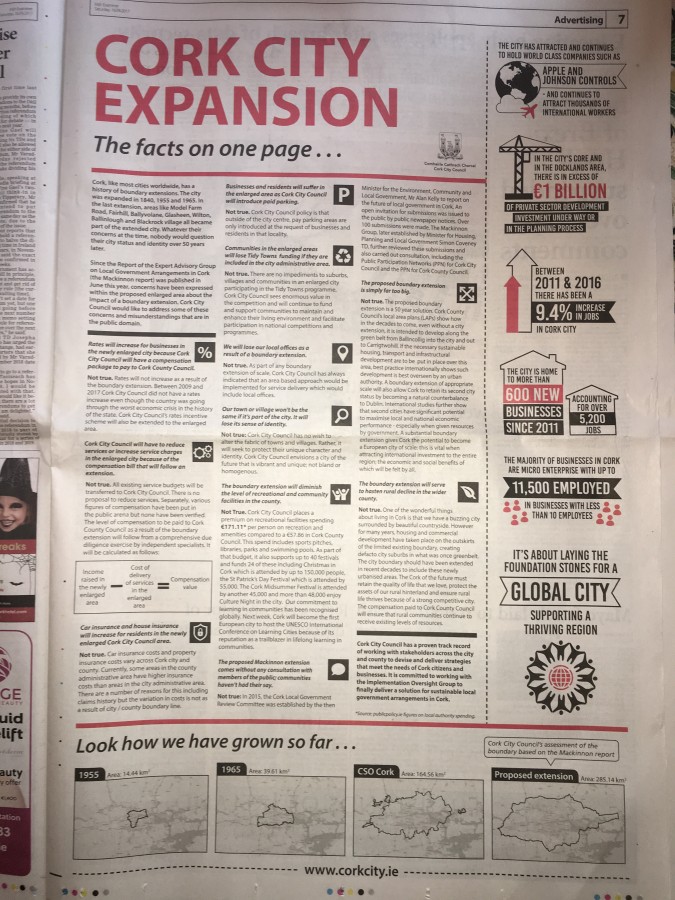
Blackrock Village Festival, 16 September, 2pm-6pm
Kieran’s Our City, Our Town, 14 September 2017
Kieran’s Our City, Our Town Article,
Cork Independent, 14 September 2017
The Wheels of 1917: American Sailors on Cork Streets
In early September 1917, a coast to coast call for military men was made across the United States of America. The calls strove for a quarter of a million men to enlist in the American forces on battle fronts in Western Europe. They were asked to gather at the mobilisation camps. In the first week of September up to 30,000 men were paraded in New York. They were drawn from 26 States and the district of Columbia. This division, which was sent off to France, represented more than half of the states of the United States.
Over the two years between 1917-1919, thousands of US naval personnel would be stationed in Cork Harbour and Bantry Bay, engaging in the war against German U-boats and seeking to ensure convoy security. In September 1917 in Queenstown (now Cobh) according to the diary of American Naval Commander Joseph Knefler Taussig, there were eight American destroyers – Wadsworth, Porter, Shaw, Ericsson, Jacob Jones, Paulding, Burrows, and Sterett – all helping to convoy merchant ships in the Irish sea. Their wide web of facilities in the county by war”s end comprised sites in Cobh, Passage West, Haulbowline (now the Irish Naval Service headquarters), Ringaskiddy, Aghada, Bere Island, Berehaven and Whiddy Island. Aside from their storage and barrack sites, the Americans also set up training areas, recreational centres and a hospital.
The hundreds of sailors involved in these ships were quite the celebrity in the harbour and in the city. In July 1917, the officers of the Cork County Cricket Club wrote to the US embassy in London offering their pavilion and grounds at the Mardyke to the Americans should they need them. The very offer led the commanders of two of the Cobh-based vessels, the USS Melville and the USS Trippe, to think about staging a baseball match between their respective crews. it was decided to use it to raise funds to support the local Queenstown War Workers fund. It was played on a midweek July afternoon before a crowd of 3,000 people. There were many American sailors among them, but the majority were local onlookers.
In addition, some newspaper reports (Cork Examiner & Evening Echo) noted that hundreds of young women each night were drawn to Queenstown to mix with those sailors on shore leave. That was enough to raise the tempers of some sidelined local men. In the city on Monday 3 September 1917 a party comprised of young boys hissed and jeered at American sailors whom they chanced to meet. It started in King street (now MacCurtain Street). American sailors accompanied by young girls attracted the attention of a number of young fellows, who immediately vented their resentment by jeering. They followed the sailors and girls until quite a large crowd gathered and the girls and sailors parted. They passed another number of Americans, and the crowd directed their efforts against these. The crowd followed and jeered at them to the Lower Glanmire Road Railway Bridge. Here the police intervened, and moved the crowd back towards King Street. Near the Coliseum an American sailor, standing in the portico of the theatre, was the centre of attention. It transpired he was attacked by a group of youngsters.
The police continued to move the crowd along King Street, down Bridge street, and on to Patrick’s Bridge. By the time the activity had dwindled somewhat and matters were quieter. But a group of juveniles, bearing a Sinn Fein flag in front, crossed over the bridge in the direction of Bridge Street, where the police were in force. They had not gone, far when the police, with batons in hand, charged them. The party ran down Pope’s Quay, and some stones were thrown, amidst shouts of “Up Dublin” and “Up the Huns”.
Following the city incident, the American sailors were forbidden to come into Cork City. With restricted shore leave in Queenstown there was a number of disturbances there involving American sailors and local civilians. The civilians displayed ill-feeling towards women from Cork City who had been travelling to Queenstown each night to meet the sailors. Police in Queenstown reported several incidents of disorder, but these mostly arose from the Americans arguing among themselves whilst on shore leave. Lively behaviour and a few isolated “scraps” were reported, but there were no assaults or damage to property. Local police confirmed that the glass door of a public house on King Street was broken by a party of American sailors. It is not known if the incident occurred owing to an accident or resentment on being refused drink after authorised hours.
Tensions were heightened on Saturday 8 September 1917 when a Cork labourer was killed during disturbances involving an American sailor at Queenstown. The Haulbowline man, Fred Plummer, was struck by the sailor with a closed fist, his head hitting the concrete flagged footpath of the beach. Plummer was unconscious when taken to Queenstown General Hospital, where he subsequently died from what an inquest found to have been a fracture of the skull.
To highlight the social history of the American Navy in Cobh in 1917, an exhibition has been researched and prepared by archaeologist and historian Damian Shiels. It is designed and produced in association with Sirius Arts Centre, Cobh and is on display till 17 September. It is entitled Portraits: Women of Cork and the U S Navy 1917-1919 and explores the marriage of some American sailors and Cork women. There is also some great information on this era on display in Cobh Museum.
Captions:
912a. American Sailors at Queenstown now Cobh in 1917 (source: Cobh Museum)
912b. U S Sailors patrolling streets of Queenstown (source: Naval History and Heritage Command, Washington)
